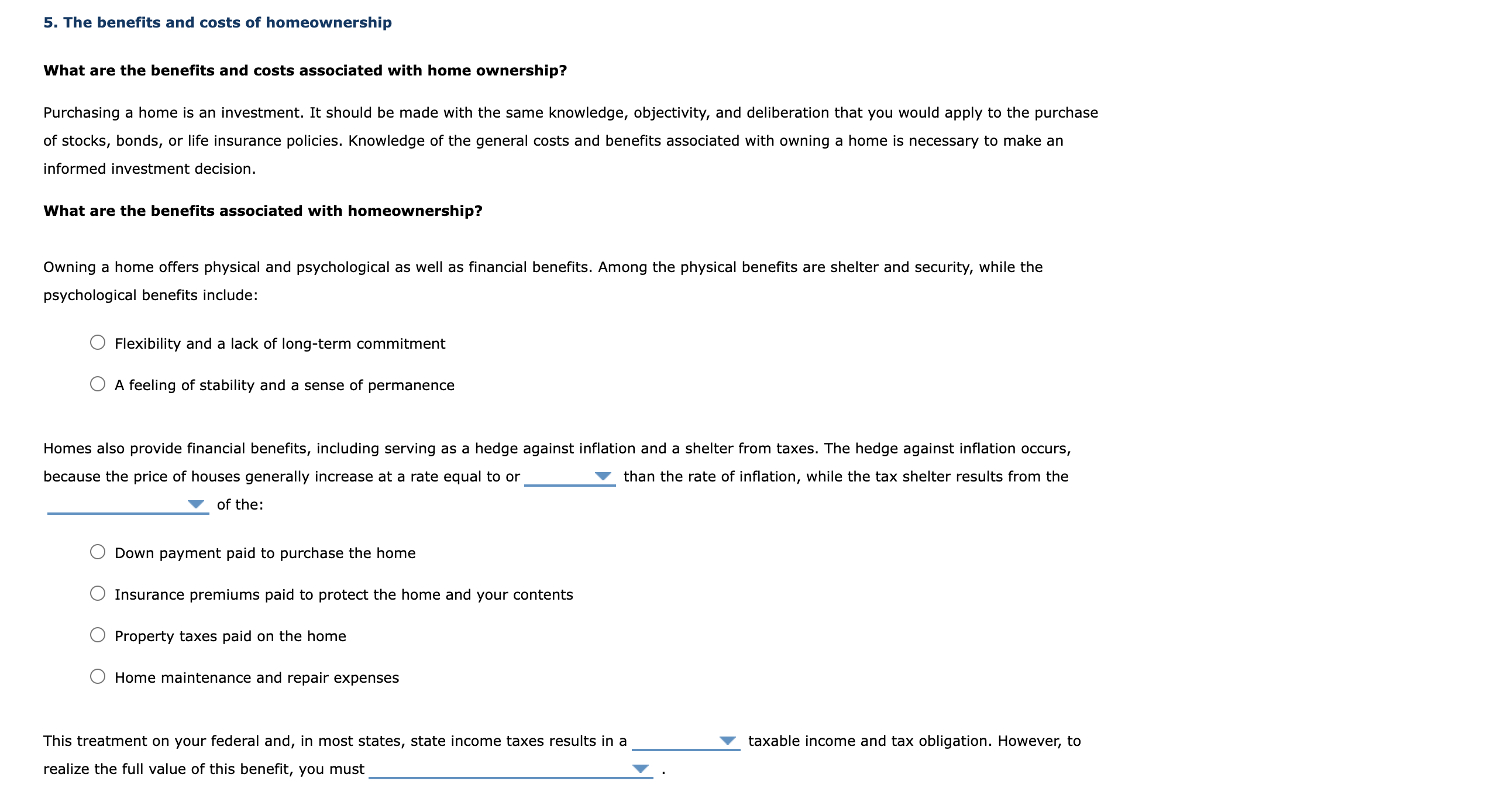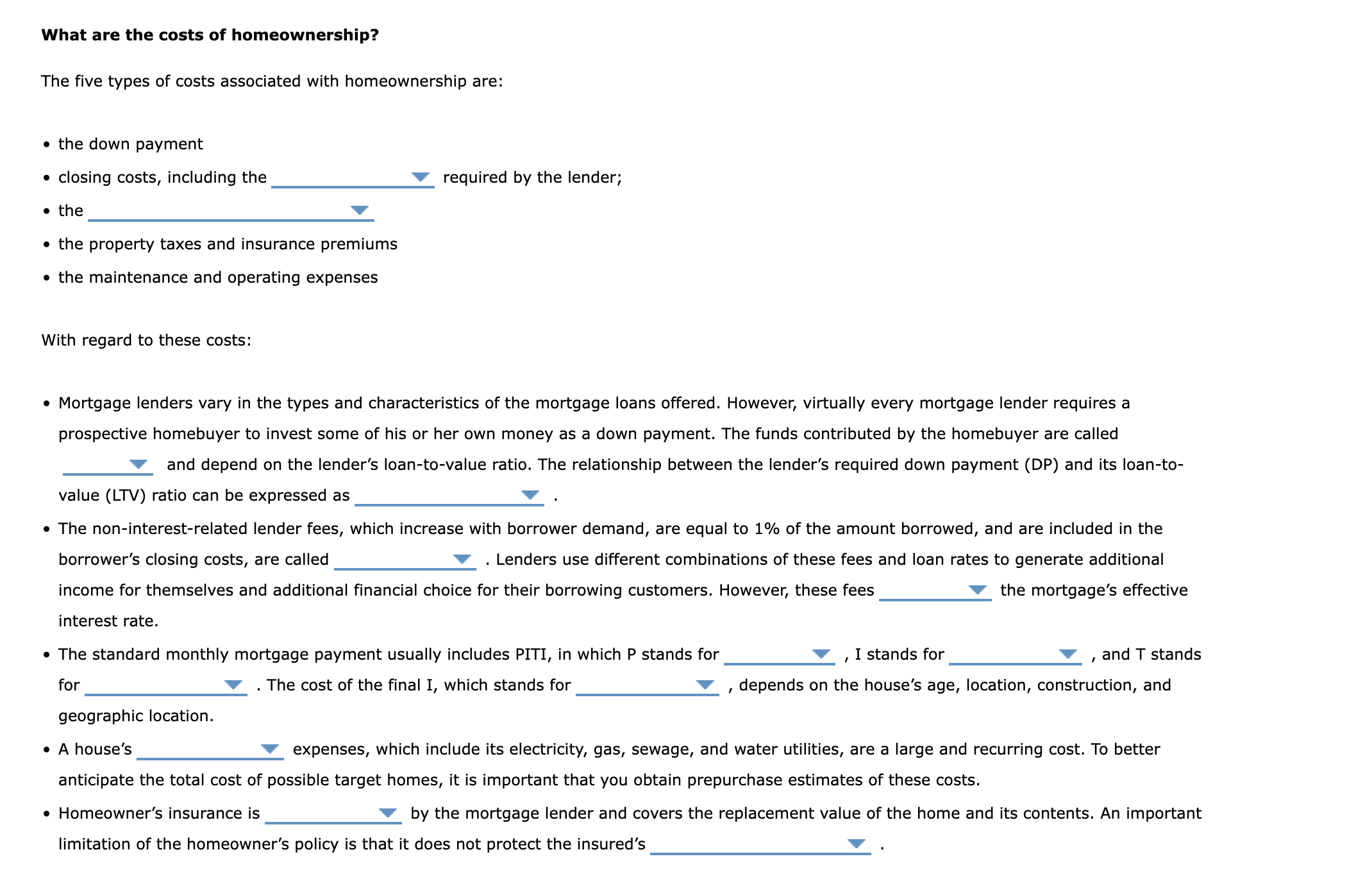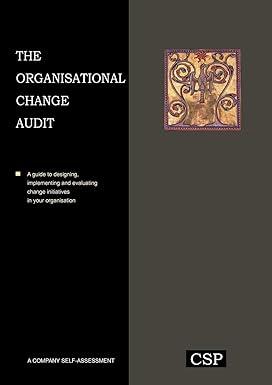Answered step by step
Verified Expert Solution
Question
1 Approved Answer
5. The benefits and costs of homeownership What are the benefits and costs associated with home ownership? Purchasing a home is an investment. It should

 5. The benefits and costs of homeownership What are the benefits and costs associated with home ownership? Purchasing a home is an investment. It should be made with the same knowledge, objectivity, and deliberation that you would apply to the purchase of stocks, bonds, or life insurance policies. Knowledge of the general costs and benefits associated with owning a home is necessary to make an informed investment decision. What are the benefits associated with homeownership? Owning a home offers physical and psychological as well as financial benefits. Among the physical benefits are shelter and security, while the psychological benefits include: Flexibility and a lack of long-term commitment A feeling of stability and a sense of permanence Homes also provide financial benefits, including serving as a hedge against inflation and a shelter from taxes. The hedge against inflation occurs, because the price of houses generally increase at a rate equal to or than the rate of inflation, while the tax shelter results from the of the: Down payment paid to purchase the home Insurance premiums paid to protect the home and your contents Property taxes paid on the home Home maintenance and repair expenses This treatment on your federal and, in most states, state income taxes results in a realize the full value of this benefit, you must taxable income and tax obligation. However, to - Mortgage lenders vary in the types and characteristics of the mortgage loans offered. However, virtually every mortgage lender requires a prospective homebuyer to invest some of his or her own money as a down payment. The funds contributed by the homebuyer are called and depend on the lender's loan-to-value ratio. The relationship between the lender's required down payment (DP) and its loan-tovalue (LTV) ratio can be expressed as - The non-interest-related lender fees, which increase with borrower demand, are equal to 1% of the amount borrowed, and are included in the borrower's closing costs, are called . Lenders use different combinations of these fees and loan rates to generate additional income for themselves and additional financial choice for their borrowing customers. However, these fees the mortgage's effective interest rate. - The standard monthly mortgage payment usually includes PITI, in which P stands for , I stands for , and T stands for . The cost of the final I, which stands for , depends on the house's age, location, construction, and geographic location. - A house's expenses, which include its electricity, gas, sewage, and water utilities, are a large and recurring cost. To better anticipate the total cost of possible target homes, it is important that you obtain prepurchase estimates of these costs. - Homeowner's insurance is by the mortgage lender and covers the replacement value of the home and its contents. An important limitation of the homeowner's policy is that it does not protect the insured's
5. The benefits and costs of homeownership What are the benefits and costs associated with home ownership? Purchasing a home is an investment. It should be made with the same knowledge, objectivity, and deliberation that you would apply to the purchase of stocks, bonds, or life insurance policies. Knowledge of the general costs and benefits associated with owning a home is necessary to make an informed investment decision. What are the benefits associated with homeownership? Owning a home offers physical and psychological as well as financial benefits. Among the physical benefits are shelter and security, while the psychological benefits include: Flexibility and a lack of long-term commitment A feeling of stability and a sense of permanence Homes also provide financial benefits, including serving as a hedge against inflation and a shelter from taxes. The hedge against inflation occurs, because the price of houses generally increase at a rate equal to or than the rate of inflation, while the tax shelter results from the of the: Down payment paid to purchase the home Insurance premiums paid to protect the home and your contents Property taxes paid on the home Home maintenance and repair expenses This treatment on your federal and, in most states, state income taxes results in a realize the full value of this benefit, you must taxable income and tax obligation. However, to - Mortgage lenders vary in the types and characteristics of the mortgage loans offered. However, virtually every mortgage lender requires a prospective homebuyer to invest some of his or her own money as a down payment. The funds contributed by the homebuyer are called and depend on the lender's loan-to-value ratio. The relationship between the lender's required down payment (DP) and its loan-tovalue (LTV) ratio can be expressed as - The non-interest-related lender fees, which increase with borrower demand, are equal to 1% of the amount borrowed, and are included in the borrower's closing costs, are called . Lenders use different combinations of these fees and loan rates to generate additional income for themselves and additional financial choice for their borrowing customers. However, these fees the mortgage's effective interest rate. - The standard monthly mortgage payment usually includes PITI, in which P stands for , I stands for , and T stands for . The cost of the final I, which stands for , depends on the house's age, location, construction, and geographic location. - A house's expenses, which include its electricity, gas, sewage, and water utilities, are a large and recurring cost. To better anticipate the total cost of possible target homes, it is important that you obtain prepurchase estimates of these costs. - Homeowner's insurance is by the mortgage lender and covers the replacement value of the home and its contents. An important limitation of the homeowner's policy is that it does not protect the insured's Step by Step Solution
There are 3 Steps involved in it
Step: 1

Get Instant Access to Expert-Tailored Solutions
See step-by-step solutions with expert insights and AI powered tools for academic success
Step: 2

Step: 3

Ace Your Homework with AI
Get the answers you need in no time with our AI-driven, step-by-step assistance
Get Started


